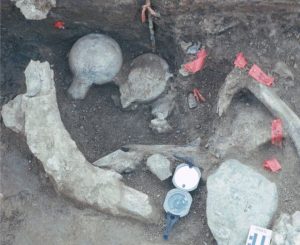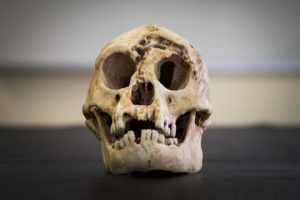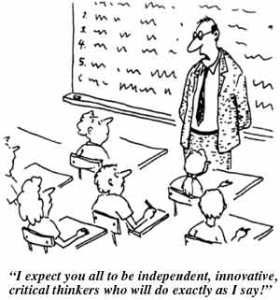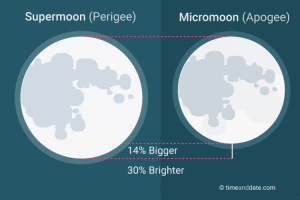Dec
22
2017
 Science continues to kick ass in 2017, despite the fact that it often feels as if our species can’t get out of our own way. Obviously we need to keep our eye on important social and political issues, but it is reassuring to realize that there are many scientists quietly working away in their labs, clinics, observatories, or wherever to nudge our collective knowledge forward.
Science continues to kick ass in 2017, despite the fact that it often feels as if our species can’t get out of our own way. Obviously we need to keep our eye on important social and political issues, but it is reassuring to realize that there are many scientists quietly working away in their labs, clinics, observatories, or wherever to nudge our collective knowledge forward.
Here are some of the science news stories from 2017 that I think deserve notice and give us a good indication of what is to come.
The Age of Genetic Engineering
Genetic engineering is nothing new, but we seem to be on the upswing of an exponential curve with this technology. In recent years CRISPR has provided cheap and fast genetic manipulation, resulting in an explosion of research and potential applications. The technology borrows a system from bacteria used in their immune defense against viruses. It allows for the specific targeting of sequences of DNA which can then be clipped out and even replaced.
CRISPR technology continues to advance on two main fronts – improving the technology itself, and finding applications for it. This year researchers discovered how to adjust the specificity of CRISPR targeting – making it slower but more precise as desired. As powerful as this tech is, we are still on the steep part of the curve and it continues to improve. Continue Reading »
Nov
28
2017
 Masaru Emoto thought that emotions can affect inanimate objects. If you are nice to water and then freeze it, it will make pretty happy crystals. If you are mean to water and then freeze it, it will make ugly unhappy crystals. He wrote:
Masaru Emoto thought that emotions can affect inanimate objects. If you are nice to water and then freeze it, it will make pretty happy crystals. If you are mean to water and then freeze it, it will make ugly unhappy crystals. He wrote:
The result was that we always observed beautiful crystals after giving good words, playing good music, and showing, playing, or offering pure prayer to water. On the other hand, we observed disfigured crystals in the opposite situation.
I know – this is ridiculous. Why even bother? Scientific skeptics study pseudoscience for several reasons. What is interesting about Emoto’s research is not the research question he was pursuing (which has close to zero plausibility) but how he had managed to convince himself that his research supported his fantastical notion. Further, he had managed to convince (or at least intrigue) a large segment of the public that he was onto something, and so this presents an opportunity to teach the public about how science works and how we can distinguish it from pseudoscience. Finally, even serious science can fall prey to error and self-deception. Blatant pseudoscience is an excellent opportunity to see pathological science in the extreme, which helps us understand it better phenomenologically, and hopefully then avoid more subtle manifestations elsewhere.
I do want to emphasize that I have no problem with Emoto researching this question (as long as he was not wasting limited public research funds). Exploring seemingly wacky ideas may bear unforeseen fruit. The probability is low, but that is the nature of exploratory research. Fringe research is a good way to keep us on our toes, keep us from getting too complacent or narrow in our view. And very occasionally, we may just get surprised. Even if the hypothesis itself turns out to be hopelessly wrong, we may find something unexpected along the way.
Continue Reading »
Oct
12
2017
 Science only works when it works.
Science only works when it works.
In other words – science itself does not lead to an understanding of the universe unless that science is done correctly, rigorously, and honestly. This is a lot harder than I think is generally appreciated. In order to really reach firm scientific conclusions about any complex question we need to follow the arch of the research as it matures. We need to see what overall patterns emerge in the evidence. Eventually a tentative but reliable scientific consensus can be achieved.
There are many ways in which this process can go off the rails, however. With ESP we see researchers chasing the noise – trying to find tiny signals but only chasing their tails. With acupuncture we see proponents choosing to ignore, misinterpret, and then abandon well-controlled clinical trials in favor of “pragmatic” studies that will show them what they want. There is “cargo cult” science that goes through the superficial motions but lacks true scientific methodology. There is “Tooth Fairy” science that nibbles around the edges but never addresses the core premise – is the phenomenon actually real?
There is a huge positive bias in science – researchers have a tendency to tweak their methods to get the results they want, publishers have a tendency to publish positive exciting research, and other scientists have a bias toward citing positive interesting research. Funding sources affect research outcome. When pharmaceutical companies fund research the results are much more likely to be favorable to their drug than independent research. Scientists make mistakes, take shortcuts, and often have blinders on. And then there is outright fraud, which is uncommon but still crops up on a regular basis.
Continue Reading »
Jun
22
2017
 Perhaps the EU is trying to make the UK feel a little better about their Brexit vote. The highest court of the EU, the Court of Justice (is there another kind?) released a decision regarding a recent case in which a man blames his multiple sclerosis (MS) of the Hepatitis B vaccine.
Perhaps the EU is trying to make the UK feel a little better about their Brexit vote. The highest court of the EU, the Court of Justice (is there another kind?) released a decision regarding a recent case in which a man blames his multiple sclerosis (MS) of the Hepatitis B vaccine.
The pronouncement was not a decision on this specific case, but general guidance for EU courts on how to evaluate evidence of a possible causal link between a product and alleged harm. I’ll discuss the general principles at stake first, and then the details of this specific case.
The current standard is that anyone claiming damage from a product has the burden or proof to demonstrate that there is a defect in the product and that defect caused harm. The current ruling deals with the threshold for meeting that burden of proof. They write:
“In the present case, the Court considers that the temporal proximity between the administering of a vaccine and the occurrence of a disease, the lack of personal and familial history of that disease, together with the existence of a significant number of reported cases of the disease occurring following such vaccines being administered, appears on the face of it to constitute evidence which, taken together, may lead a national court to consider that a victim has discharged his burden of proof. That could be the case inter alia where that evidence leads the court to consider, first, that the administering of the vaccine is the most plausible explanation for the occurrence of the disease and, second, that the vaccine therefore does not offer the safety that one is entitled to expect.”
Continue Reading »
May
11
2017
The FDA recently amended their draft proposal for: FDA Education Blueprint for Health Care Providers
Involved in the Management or Support of Patients with Pain. The draft proposal includes this statement:
“Nonpharmacologic therapies – includes psychological, physical rehabilitative, surgical approaches; and complementary therapies.”
And below further defines, ” Complementary therapies – e.g., acupuncture, chiropracty”
Recommending:
“HCPs should be knowledgeable about the range of available therapies, when they may be helpful, and when they should be used as part of a multidisciplinary approach to pain management.”
While the current problems with opioid overuse are significant and adequate pain management remains a challenge, introducing unscientific methods will not help health consumers and will only waste resources. Introduction of these recommendations for unscientific methods does not reflect scientific consensus, but intense lobbying by proponents who stand to financially gain from their inclusion.
Acupuncture specifically has been studied extensively, with thousands of clinical trials, and yet proponents have not been able to demonstrate that acupuncture is effective for any indication, including pain. In short, acupuncture does not work.
Continue Reading »
Apr
28
2017
 Scientists like to be really sure. That is pretty much what the scientific method is all about – systematically controlling for all possibilities, all confounding factors, all variables and all alternative interpretations. We feel more confident when multiple lines of evidence converge on one explanation, and when rigorous attempts to disprove that explanation fail.
Scientists like to be really sure. That is pretty much what the scientific method is all about – systematically controlling for all possibilities, all confounding factors, all variables and all alternative interpretations. We feel more confident when multiple lines of evidence converge on one explanation, and when rigorous attempts to disprove that explanation fail.
I like seeing that process in action over specific claims, especially when the claim itself is interesting.
One such interesting question is, what was the earliest human presence in the Americas? Any question about first or earliest is always tentative in paleontology. It simply refers to our current evidence, but it is statistically unlikely that we will have found the literal earliest example of a species or an occupation. So conclusions about “earliest” are always changing, moving back as more evidence is found.
There is solid archaeological evidence for human occupation near the Bering Strait 14,000 years ago. There is strong but not universally accepted evidence for this occupation going back 24,000 years. So that is the current range of possible dates for the earliest presence of humans in North America.
Continue Reading »
Apr
25
2017
 I have been following the story of Homo floresiensis for the last decade, and it is fascinating. The remains of a diminutive humanoid were found on the island of Fores in Indonesia. The remains date to about 54,000 years ago. The findings immediately sparked debate, with two primary schools of thought emerging.
I have been following the story of Homo floresiensis for the last decade, and it is fascinating. The remains of a diminutive humanoid were found on the island of Fores in Indonesia. The remains date to about 54,000 years ago. The findings immediately sparked debate, with two primary schools of thought emerging.
The first hypothesized that H. foresiensis (nicknamed the Hobbit due to their small size) was a new species of hominin, likely evolve from H. erectus and displaying an example of island dwarfism. The second argued that the remains are not a new species at all and represent a pathological H. sapiens (modern human).
The two groups have argued back and forth in the scientific literature over the years. It is, in fact, a great example of the scientific method in action. Each group brought new evidence and a new perspective to bear, and had the burden of proof to demonstrate their hypothesis. They fought it out with science and evidence.
I and many others sat of the sidelines and watched the epic battle of science. I admit I was rooting for H. floresiensis, but we would all have to listen to the evidence, whatever it showed.
It’s also a good example of the limitations of mainstream science reporting. Each time a study was published, favoring one side of the debate or the other, it was reported as if the debate were finally over and now we know the answer. Instead they should have put that one study into context – this is just another round in an ongoing debate. The fight isn’t really over until one side concedes defeat and a consensus emerges. Even then, new evidence may trump the consensus, but at least we have a consensus rather than a controversy.
The New Study Continue Reading »
Mar
23
2017
 One of the (perhaps) good things to come out of the recent political climate in the US is a broader appreciation for the need to teach critical thinking skills. I hope we can capitalize on this new awareness to make some longstanding changes to our culture.
One of the (perhaps) good things to come out of the recent political climate in the US is a broader appreciation for the need to teach critical thinking skills. I hope we can capitalize on this new awareness to make some longstanding changes to our culture.
For example, a recent NYT article is titled: “Why People Continue to Believe Objectively False Things,” and begins:
“Everyone is entitled to his own opinion, but not his own facts,” goes the saying — one that now seems like a relic of simpler times.
The article also discusses recent evidence showing that belief in the “birther” Obama conspiracy decreased after Trump admitted that Obama was born in Hawaii. Shortly after that admission 62% of people stated they believed Obama was a US citizen, but a more recent poll shows the number dropped to 57%. (Over that period of time fewer Republicans believed he was a US citizen, while more Democrats did.) The authors conclude that over time people forget specific information while they revert to old tribal beliefs.
A recent study looking at Twitter activity also reinforces the evidence that people generally follow their instincts rather than critical thinking. They showed that people will rate the believability of a tweet as higher, and are more likely to share that tweet, if it already has a high number of retweets. This creates a positive feedback loop in which retweets beget retweets, regardless of the inherent reliability of the information.
Continue Reading »
Dec
15
2016
 Interpreting scientific studies is difficult. You need to have a thorough working knowledge of scientific methodology, statistical analysis, and the specific field of the science itself. Individual studies also need to be put into the context of all the other studies that touch upon the same question.
Interpreting scientific studies is difficult. You need to have a thorough working knowledge of scientific methodology, statistical analysis, and the specific field of the science itself. Individual studies also need to be put into the context of all the other studies that touch upon the same question.
It also has to be recognized that all scientific studies are imperfect and only look at a slice of a larger question. Even scientific experts can therefore honestly disagree about how best to interpret the evidence, until that evidence becomes overwhelming (and even then there are often outliers with minority opinions).
If you have an agenda other than understanding the best interpretation of all available evidence, it is easy to find evidence you can twist to serve your preferred narrative. You can then (falsely) claim that your position is supported by science. You can also rely on the fact that most of the public will not be sufficiently scientifically savvy to see the flaw in your reasoning.
A recent article by Edward Morgan on the alleged risks of GMO insulin is a great example of this phenomenon. The title is: GMO Insulin Causes Type 1 Diabetes in Type 2 Diabetics, Study Finds. That is not what the study found.
The author has a clear anti-GMO agenda and so they are trying to argue that insulin which is made from genetically modified bacteria (which is how almost all insulin is made today) is dangerous. They do this by cherry picking studies they clearly don’t understand and then misinterpreting them.
Continue Reading »
Nov
14
2016
 On November 6th Nigel Antony Gray predicted on his Facebook feed:
On November 6th Nigel Antony Gray predicted on his Facebook feed:
“Heads Up: On 14th November and a couple of days either side of that date, watch for a major earthquake, and quite possible in South Pacific area.”
On November 13th there was a magnitude 7.5 Earthquake on the south island of New Zealand. So far the death toll is two people. This was a significant quake along a known fault line that runs through the south island.
The internet was apparently very impressed with this prediction. Gray has long argued that earthquakes can be predicted by looking at the lunar cycle, because of the tidal forces of the moon on the earth. He is particularly fond of supermoons – when the moon is at perigee, the closest point in its orbit around the earth.
Supermoon
Tonight will be the most super supermoon since 1948. Last night and tonight the full moon will appear slightly larger than you are used to. You will not notice this difference, however. If you saw pictures of the apparent size of the moon side by side you can see the slight difference, but you would never notice it just by viewing the moon.
Continue Reading »
 Science continues to kick ass in 2017, despite the fact that it often feels as if our species can’t get out of our own way. Obviously we need to keep our eye on important social and political issues, but it is reassuring to realize that there are many scientists quietly working away in their labs, clinics, observatories, or wherever to nudge our collective knowledge forward.
Science continues to kick ass in 2017, despite the fact that it often feels as if our species can’t get out of our own way. Obviously we need to keep our eye on important social and political issues, but it is reassuring to realize that there are many scientists quietly working away in their labs, clinics, observatories, or wherever to nudge our collective knowledge forward.
 Masaru Emoto thought that emotions can affect inanimate objects. If you are nice to water and then freeze it, it will make pretty happy crystals. If you are mean to water and then freeze it, it will make ugly unhappy crystals.
Masaru Emoto thought that emotions can affect inanimate objects. If you are nice to water and then freeze it, it will make pretty happy crystals. If you are mean to water and then freeze it, it will make ugly unhappy crystals.  Science only works when it works.
Science only works when it works. Perhaps the EU is trying to make the UK feel a little better about their Brexit vote. The highest court of the EU, the Court of Justice (is there another kind?)
Perhaps the EU is trying to make the UK feel a little better about their Brexit vote. The highest court of the EU, the Court of Justice (is there another kind?)  Scientists like to be really sure. That is pretty much what the scientific method is all about – systematically controlling for all possibilities, all confounding factors, all variables and all alternative interpretations. We feel more confident when multiple lines of evidence converge on one explanation, and when rigorous attempts to disprove that explanation fail.
Scientists like to be really sure. That is pretty much what the scientific method is all about – systematically controlling for all possibilities, all confounding factors, all variables and all alternative interpretations. We feel more confident when multiple lines of evidence converge on one explanation, and when rigorous attempts to disprove that explanation fail. I have been following the story of Homo floresiensis for the last decade, and it is fascinating. The remains of a diminutive humanoid were found on the island of Fores in Indonesia. The remains date to about 54,000 years ago. The findings immediately sparked debate, with two primary schools of thought emerging.
I have been following the story of Homo floresiensis for the last decade, and it is fascinating. The remains of a diminutive humanoid were found on the island of Fores in Indonesia. The remains date to about 54,000 years ago. The findings immediately sparked debate, with two primary schools of thought emerging. One of the (perhaps) good things to come out of the recent political climate in the US is a broader appreciation for the need to teach critical thinking skills. I hope we can capitalize on this new awareness to make some longstanding changes to our culture.
One of the (perhaps) good things to come out of the recent political climate in the US is a broader appreciation for the need to teach critical thinking skills. I hope we can capitalize on this new awareness to make some longstanding changes to our culture. Interpreting scientific studies is difficult. You need to have a thorough working knowledge of scientific methodology, statistical analysis, and the specific field of the science itself. Individual studies also need to be put into the context of all the other studies that touch upon the same question.
Interpreting scientific studies is difficult. You need to have a thorough working knowledge of scientific methodology, statistical analysis, and the specific field of the science itself. Individual studies also need to be put into the context of all the other studies that touch upon the same question. On November 6th Nigel Antony Gray predicted on his Facebook feed:
On November 6th Nigel Antony Gray predicted on his Facebook feed:




